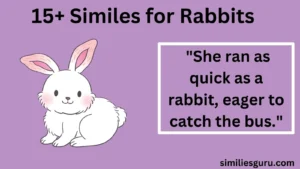Similes are a powerful tool in writing, allowing writers to draw vivid comparisons that enhance understanding and engagement. Whether you’re crafting an essay, a story, or even a casual message, similes can elevate your language and make your writing more relatable. However, relying on the same old phrases can make your work feel repetitive and uninspired. This article explores over 20 similes for essays, offering polite, professional, and casual alternatives to help you express yourself with clarity and creativity.
We’ll also delve into the nuances of tone, provide examples, and guide you on choosing the best simile for any context. Additionally, you’ll find nine texting examples optimized for user-friendliness and Google readability. Let’s dive in!
What Are Similes?
A simile is a figure of speech that compares two different things using the words “like” or “as.” For example, “Her smile was as bright as the sun” is a simile that creates a vivid image in the reader’s mind. Similes are commonly used in essays, poetry, and everyday language to make descriptions more engaging and relatable.
Why Use Similes in Essays?
- Enhance Imagery: Similes help paint a picture in the reader’s mind, making your writing more vivid.
- Simplify Complex Ideas: They can make abstract or complicated concepts easier to understand.
- Add Emotional Depth: Similes can evoke emotions, making your writing more impactful.
- Engage Readers: Creative comparisons keep readers interested and invested in your work.
20+ Similes for Essays
Here’s a curated list of similes that you can use in your essays, categorized by tone and context:
Polite and Professional Similes
- As clear as crystal – Used to describe something that is easy to understand.
- Example: “Her explanation was as clear as crystal, leaving no room for doubt.”
- As smooth as silk – Ideal for describing something that is effortless or flawless.
- Example: “The negotiation process was as smooth as silk, thanks to their professionalism.”
- As steady as a rock – Perfect for describing reliability or stability.
- Example: “Despite the chaos, her focus remained as steady as a rock.”
- As sharp as a tack – Used to describe someone who is very intelligent or perceptive.
- Example: “His analysis was as sharp as a tack, revealing insights others had missed.”
- As light as a feather – Great for describing something that is very light or easy.
- Example: “After finishing the project, I felt as light as a feather.”
- As bright as a button – Used to describe someone who is cheerful or intelligent.
- Example: “The new intern is as bright as a button, always ready with innovative ideas.”
- As quick as lightning – Ideal for describing speed or efficiency.
- Example: “Her response was as quick as lightning, solving the issue in minutes.”
- As strong as an ox – Perfect for describing physical or mental strength.
- Example: “Despite the challenges, his determination was as strong as an ox.”
- As quiet as a mouse – Used to describe silence or stealth.
- Example: “He entered the room as quiet as a mouse, not wanting to disturb anyone.”
- As cold as ice – Great for describing emotional detachment or low temperatures.
- Example: “Her demeanor was as cold as ice, making it hard to approach her.”
Casual and Creative Similes
- Like a fish out of water – Used to describe someone who feels out of place.
- Example: “At the formal event, I felt like a fish out of water.”
- Like a bull in a china shop – Ideal for describing clumsiness or recklessness.
- Example: “He barged into the meeting like a bull in a china shop, disrupting the flow.”
- Like two peas in a pod – Perfect for describing close relationships or similarities.
- Example: “The twins are like two peas in a pod, always together and thinking alike.”
- Like a kid in a candy store – Used to describe excitement or enthusiasm.
- Example: “When she saw the library, she was like a kid in a candy store.”
- Like a moth to a flame – Great for describing irresistible attraction.
- Example: “He was drawn to the challenge like a moth to a flame.”
- Like a needle in a haystack – Ideal for describing something hard to find.
- Example: “Finding the right document was like finding a needle in a haystack.”
- Like a broken record – Used to describe repetition or monotony.
- Example: “His complaints were like a broken record, going on and on.”
- Like a breath of fresh air – Perfect for describing something refreshing or new.
- Example: “Her innovative approach was like a breath of fresh air.”
- Like a house on fire – Great for describing something that is happening quickly or intensely.
- Example: “The project took off like a house on fire, with everyone contributing enthusiastically.”
- Like a deer in headlights – Used to describe shock or confusion.
- Example: “When asked to present, he looked like a deer in headlights.”
Nuances of Tone in Similes
The tone of your simile should match the context of your writing. For example:
- Formal Tone: Use polished and professional similes like “as clear as crystal” or “as sharp as a tack.”
- Casual Tone: Opt for relatable and creative similes like “like a fish out of water” or “like a kid in a candy store.”
- Emotional Tone: Choose similes that evoke feelings, such as “as cold as ice” or “like a breath of fresh air.”
How to Choose the Right Simile
- Consider Your Audience: Are you writing for a formal or casual audience?
- Match the Context: Ensure the simile fits the situation you’re describing.
- Avoid Clichés: While some clichés are effective, try to use fresh and original comparisons.
- Keep It Simple: Don’t overcomplicate your simile; it should enhance, not confuse.
9 Texting Examples Using Similes
Here are nine texting examples that incorporate similes, optimized for readability and user engagement:
- Casual: “Just finished my workout, and I feel like a wet noodle 🍜😂”
- Professional: “The presentation went as smooth as silk. Thanks for your support!”
- Encouraging: “You’ve got this! You’re as sharp as a tack, and I know you’ll ace it.”
- Excited: “OMG, the concert was amazing! I was like a kid in a candy store 🎉”
- Relatable: “Trying to find my keys this morning was like finding a needle in a haystack 🔍”
- Complimentary: “Your ideas are as bright as a button! Love working with you.”
- Sympathetic: “I know you’re feeling like a fish out of water, but you’ll adjust soon.”
- Humorous: “My cooking skills are like a bull in a china shop—total chaos! 🍳”
- Refreshing: “Your positivity is like a breath of fresh air. Thanks for being you!”
Conclusion
Similes are a versatile and impactful tool for writers, whether you’re crafting an essay, a story, or a simple text message. By choosing the right simile for the context and tone, you can make your writing more engaging, relatable, and memorable. From polite and professional comparisons to casual and creative ones, this article has provided over 20 similes to inspire your next piece of writing.
Remember, the key to using similes effectively is to keep them fresh, relevant, and appropriate for your audience. So, the next time you’re stuck for words, let these similes guide you to create something truly unique and impactful.



